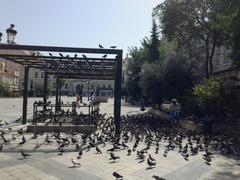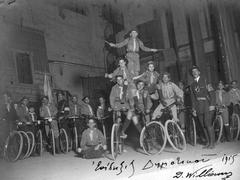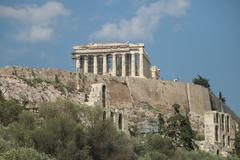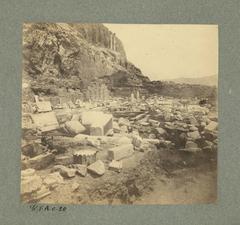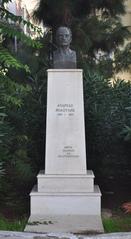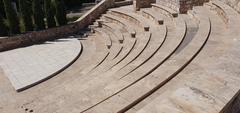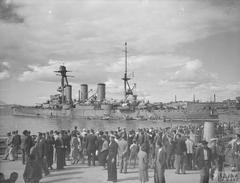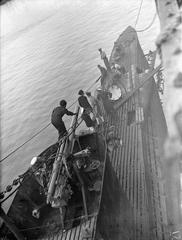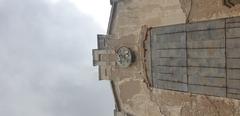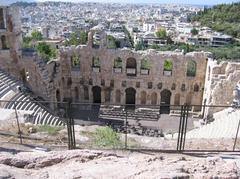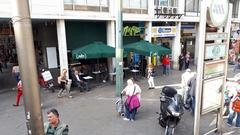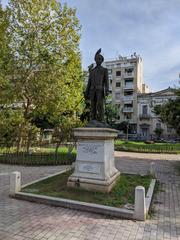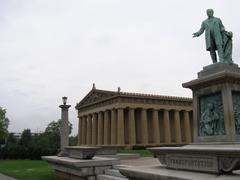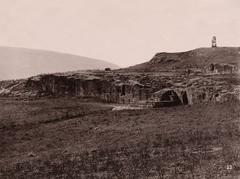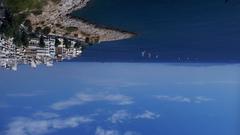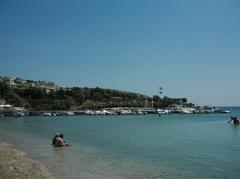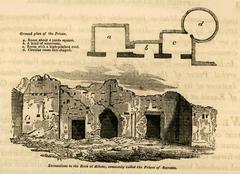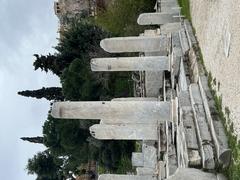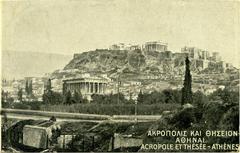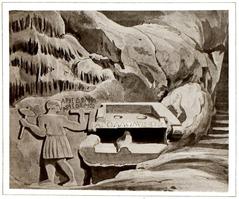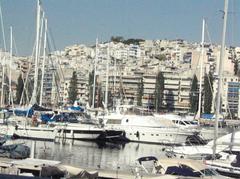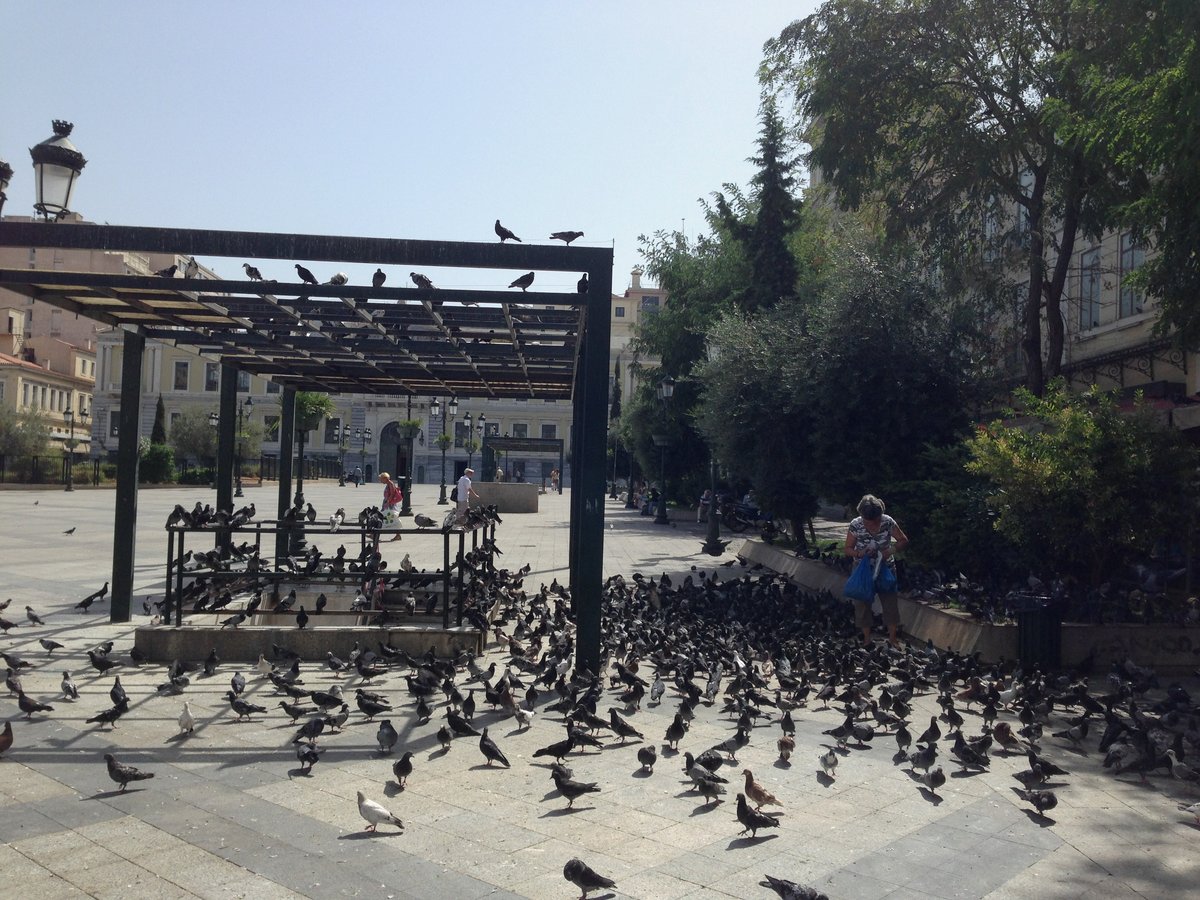
Visiting Plateia Ethnikis Antistaseos in Piraeus: Hours, Tickets, and Tips
Date: 18/07/2024
Introduction
Piraeus, Greece, is a city steeped in history and culture, serving as the primary port of Athens since ancient times. One of the most significant landmarks in this bustling maritime hub is Πλατεία Εθνικής Αντιστάσεως, or National Resistance Square. This square is not just a public space but a repository of rich historical narratives that span from antiquity to modern times. It commemorates the Greek resistance during World War II, symbolizing the resilience and bravery of the Greek people (Hellenic Ministry of Culture and Sports). The square has undergone numerous transformations, each layer adding to its historical and cultural tapestry, making it a must-visit for history enthusiasts and casual tourists alike. With a blend of ancient heritage and modern urban planning, Πλατεία Εθνικής Αντιστάσεως offers a unique glimpse into the evolution of Piraeus and the broader historical context of Greece (Ancient History Encyclopedia). This guide aims to provide a comprehensive overview of the square’s history, architectural significance, visitor information, and tips to make the most out of your visit.
Table of Contents
- Introduction
- Historical Background
- Visitor Information
- Special Events and Guided Tours
- Photographic Spots
- Nearby Attractions
- FAQ
- Conclusion
Historical Background
Ancient Origins
Πλατεία Εθνικής Αντιστάσεως, also known as National Resistance Square, is located in the heart of Piraeus, Greece. Piraeus itself has a rich history dating back to ancient times. The area where the square is now situated was once part of the ancient city of Piraeus, which served as the primary port of Athens. The port was crucial for trade and military purposes, making Piraeus a bustling hub of activity in ancient Greece. The strategic importance of Piraeus is well-documented by historians such as Thucydides and Herodotus, who noted its significance in the Athenian naval dominance (Ancient History Encyclopedia).
Ottoman Period
During the Ottoman occupation of Greece, Piraeus experienced a period of decline. The port city was largely abandoned, and its infrastructure fell into disrepair. However, the area where Πλατεία Εθνικής Αντιστάσεως is now located remained a focal point for the local population. The square itself did not exist in its current form, but the area was used for various communal activities, including markets and public gatherings.
19th Century Revival
The 19th century marked a period of revival for Piraeus, coinciding with the Greek War of Independence (1821-1830). After Greece gained independence from the Ottoman Empire, efforts were made to rebuild and modernize Piraeus. The city was officially re-established in 1835, and urban planners began to design new public spaces, including what would eventually become Πλατεία Εθνικής Αντιστάσεως. The square was initially known as “Πλατεία Κοραή” (Korai Square), named after the Greek scholar Adamantios Korais (Greek Reporter).
20th Century and World War II
The square underwent significant changes in the 20th century, particularly during and after World War II. Greece was occupied by Axis forces from 1941 to 1944, and Piraeus was heavily bombed due to its strategic importance as a port. The square was renamed Πλατεία Εθνικής Αντιστάσεως (National Resistance Square) to honor the Greek resistance fighters who opposed the Axis occupation. This period is a poignant chapter in the square’s history, symbolizing the resilience and bravery of the Greek people (Hellenic Ministry of Culture and Sports).
Post-War Development
After World War II, Πλατεία Εθνικής Αντιστάσεως became a central point for public life in Piraeus. The square was redesigned to include modern amenities, green spaces, and monuments commemorating the resistance fighters. One of the most notable features is the statue of a resistance fighter, which serves as a constant reminder of the sacrifices made during the war. The square also became a venue for public events, political rallies, and cultural activities, solidifying its role as a communal gathering place.
Architectural Significance
The architectural layout of Πλατεία Εθνικής Αντιστάσεως reflects the broader trends in urban planning during the mid-20th century. The square is designed to be both functional and aesthetically pleasing, with wide walkways, seating areas, and landscaped gardens. The surrounding buildings, many of which date back to the early 20th century, add to the historical ambiance of the area. These buildings showcase a mix of neoclassical and modernist architectural styles, providing a visual narrative of Piraeus’ evolution over the decades (ArchDaily).
Visitor Information
Tickets and Visiting Hours
- Visiting Hours: Πλατεία Εθνικής Αντιστάσεως is open to the public 24/7. However, for guided tours or visiting nearby museums, check their specific opening hours.
- Tickets: The square itself is free to visit. For guided tours or museum entries, ticket prices may vary. It’s advisable to check online or contact local tour operators for the latest information.
Getting There
Piraeus is well-connected by public transportation, including buses, trams, and the metro. The square is within walking distance from the Piraeus metro station, making it easily accessible for visitors.
Local Amenities
The area around the square is filled with cafes, restaurants, and shops, making it convenient for visitors to find refreshments and souvenirs. Whether you’re looking for a quick snack or a full meal, the local eateries offer a range of options to suit all tastes.
Special Events and Guided Tours
Πλατεία Εθνικής Αντιστάσεως hosts numerous events throughout the year, including festivals, concerts, and public demonstrations. Participating in a local festival or concert can provide a deeper understanding of the community’s culture. Guided tours are also available, offering insights into the historical and cultural significance of the square.
Photographic Spots
The square is a popular spot for photography, thanks to its historical ambiance and beautiful architectural features. The statue of the resistance fighter and the surrounding neoclassical buildings offer excellent backdrops for memorable photos.
Nearby Attractions
While visiting Πλατεία Εθνικής Αντιστάσεως, consider exploring other nearby historical sites in Piraeus, such as the Archaeological Museum of Piraeus, the Hellenic Maritime Museum, and the ancient port of Zea. These attractions provide a broader context of the area’s rich history and cultural heritage.
FAQ
- What are the visiting hours for Πλατεία Εθνικής Αντιστάσεως? The square is open to the public 24/7.
- Is there an entrance fee? No, the square itself is free to visit.
- How can I get to Πλατεία Εθνικής Αντιστάσεως? The square is within walking distance from the Piraeus metro station and is well-connected by buses and trams.
- Are there guided tours available? Yes, guided tours are available. Check local listings or contact tour operators for more details.
- What other attractions are nearby? Nearby attractions include the Archaeological Museum of Piraeus, the Hellenic Maritime Museum, and the ancient port of Zea.
Conclusion
Πλατεία Εθνικής Αντιστάσεως stands as a testament to the enduring spirit and cultural richness of Piraeus. From its ancient origins as a crucial part of Athens’ primary port to its role in commemorating the Greek resistance during World War II, the square encapsulates a broad spectrum of historical narratives (Greek Reporter). Its architectural features, public art, and vibrant community life make it a focal point for both locals and tourists. Whether you’re interested in exploring nearby historical sites like the Archaeological Museum of Piraeus or simply soaking in the local culture at one of the many cafes and restaurants, this square offers something for everyone. By visiting Πλατεία Εθνικής Αντιστάσεως, you not only step into a space of historical significance but also engage with the living history that continues to shape Piraeus today. For those looking to delve deeper into this fascinating locale, guided tours and special events provide additional layers of context and insight. Don’t miss the opportunity to immerse yourself in this iconic square and experience the vibrant culture of Piraeus (ArchDaily).
References
- Ancient History Encyclopedia, 2023, Piraeus
- Greek Reporter, 2023, Greek War of Independence
- Hellenic Ministry of Culture and Sports, 2023, Greek resistance during World War II
- ArchDaily, 2023, Architectural significance of Piraeus
